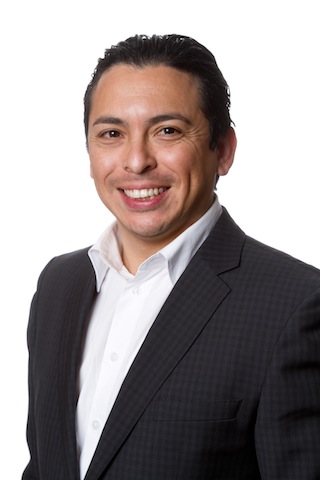 |
| Brian Solis |
From analysts and bloggers to Twitter celebrities and journalists, there’s an unprecedented number of voices out there. Now more than ever, it’s critical—yet difficult—to identify true authoritative voices and influencers in your marketplace.
Measuring influence is a whole new ballgame, says Katie Paine, CEO and founder of KDPaine & Partners. “Years ago you had a list of influencers that you had to pay attention to, and that list got updated maybe once a year,” says Paine. “Now that list needs to be updated every month.”
Influencer experts say that social media’s “coolness factor” has clouded the issue, according to Brian Solis, a prominent social media influencer himself and a keynote speaker at the June 21-22 Social Media Summit/Taste of Tech. “Influence, unfortunately, is aligned with popularity,” says Solis. This can be a problem for organizations looking to laser in on people who influence a specific space.
Another way that social media has muddled the influencer picture is by the sheer volume of conversations on the Web—making the identification and measuring of influencers overwhelming to many organizations.
“[A couple of years ago,] I had clients who could look at their 200 social media mentions and identify the true influencers from that group,” says Paine. “Now, it might be up to 2,000 mentions, and all of a sudden, it’s not so easy.”
Then, says Paine, tools like Klout or Twitalyzer are put to work, and while all the tools have benefits, it’s still not easy to find true influencers. “It’s a semi-painful process,” she says.
IN THE TRENCHES
For many communicators, the influencer process involves on-the-ground, manual labor. BSR, a CSR consulting organization, identifies influencers for its member organizations the old-fashioned way: going out and talking to company executives, and finding out who the most credible influencers are in specific CSR issue areas, according to Kara Hurst, VP at BSR.
Meanwhile, at America’s Promise Alliance, identifying influencers and understanding potential audiences is done with the help from basic tools from social media platforms. “It’s an ever-evolving task for us,” says Cynthia Hobgood, VP of communications at APA. “We’ll likely experiment with more powerful tools in the future.”
Here are some suggestions from Paine to help you optimize your influencer identification and measurement efforts.
- Do a focused search of mentions on the entire marketplace, not just on your brand.
- Pick one out of every 10 of those items and figure out who is relevant. “If you’re a paying client of Twitalyzer, you can plug in and see who is monitoring the same things,” Paine says.
- Ask your customers or clients what they are paying attention to, and what issues they consider important.
Solis says digging deep to find the real influencers is the key, as is knowing what makes influencers tick. Here are some further tips from Solis:
- Learn why an influencer is compelled to be seen in your market. “Find out what motivates them to be prominent in your space, and figure out a way to link that to your influencer outreach,” says Solis.
- Help influencers keep positions of prominence. Stay relevant for them, and keep pumping out interesting information.
- Communicate with influencers outside of the usual cycle. “They couldn’t care less about a press release, but they would like to have a hand in crafting something that moves their needle of prominence,” says Solis.
Certainly the care and feeding of influencers is important. Yet the initial steps of identifying and measuring influencers is critical, and proving to be a real challenge for communicators. PRN
Attend PR News’ two-day Social Media Summit/Taste of Tech event June 21-22 in New York City and learn more about influencer monitoring technology and best practices.
Influencer Measurement Tools: The Free and the Paid
Jason Falls, social media consultant and author of the Social Media Explorer blog (www.socialmediaexplorer.com) has compiled a list influencer measurement tools. “These are tools that you may want to test out for your influencer efforts,” says Falls. Here’s a sampling of tools on the list:
Alltop – Blog RSS aggregator organized by topic. Lists feature top blogs in each category edited by the Alltop staff. Free
Klout – Score-producing application that measures an individual’s ability to move their networks to action. Price: Web site score generation free. Company engagement requires custom pricing.
mPACT – Dashboard shows top 10 influencers by default, but allows drill downs with no limits on what you can find. Price: $99-$599 per month.
ReSearch.ly – Offering from PeopleBrowsr allows array of topics and search-based filters to identify mentions of search terms on Twitter. Price: Free trial extended when you publish a result link. $99 per month for the paid version.
Traackr – Custom topic influencer research tool. Produces dynamic (changes weekly) top 25 list by category. Research model that factors reach, resonance and relevance to produce a numeric ranking. Price: starts at $399 per month.
TweetLevel – Edelman project that produces overall Twitter population list that can be filtered by influence, popularity, engagement and trust. Free
Twendz – Waggener Edstrom tool that identifies Twitter influencers around searched-for keywords. Free
Twitalyzer – Twitter analysis of network, reach and impact. Individual profile page displays a person’s Twitter network and cursory bio information. Price: Free benchmarks; paid plans cost $4.99-$99.99 per month.
